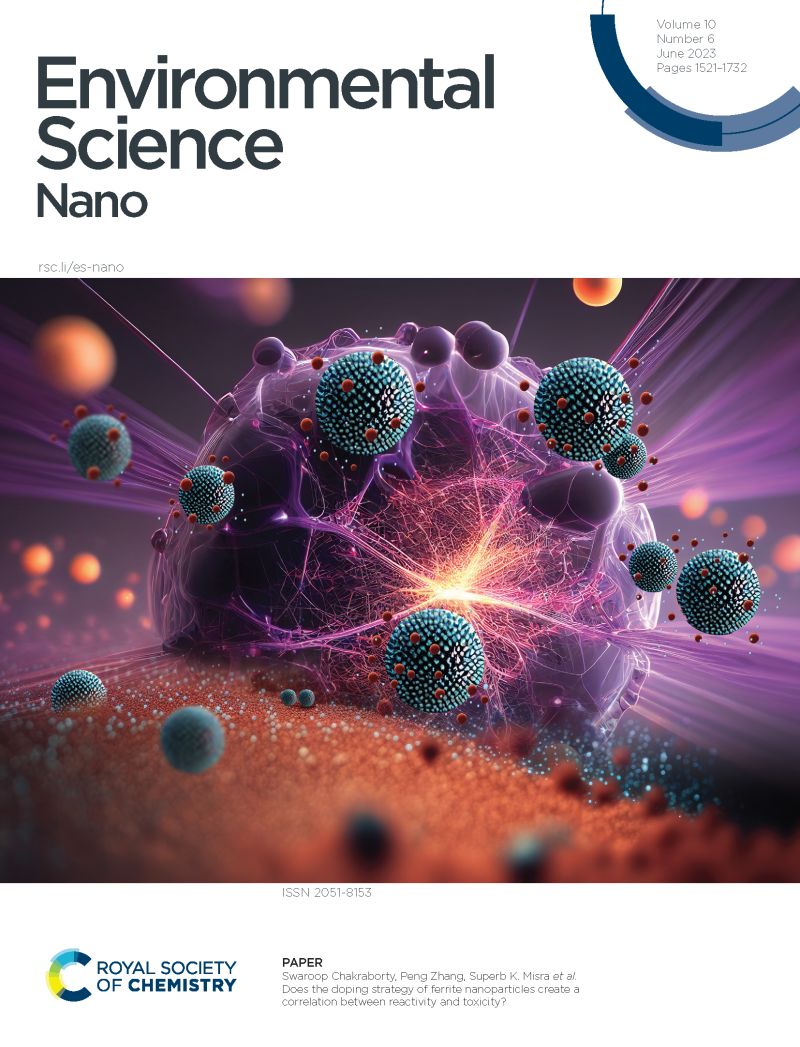Enhancing the Proportion of Three-coordinated Al Active Sites on Co/Al2O3 for Efficient CF4 Decomposition
IF 5.8
2区 环境科学与生态学
Q1 CHEMISTRY, MULTIDISCIPLINARY
引用次数: 0
Abstract
Aluminum (Al) based catalysts are the most widely used materials for CF4 Catalytic hydrolysis, where three-coordinated Al (AlIII) active sites play a pivotal role in C–F bond activation. The limited proportion of AlIII active sites in conventional Al-based catalysts suppresses their catalytic activity, thereby requiring high temperatures to achieve complete CF4 decomposition. In this work, we developed a Co-modified strategy to enhance CF4 hydrolysis performance by increasing the proportion of AlIII active sites. Structure characterization revealed that Co modification significantly raised the proportion of AlIII sites from 2% (pure Al2O3) to 13%. Temperature-programmed desorption (TPD) analysis showed that the 0.1Co/Al2O3 catalyst exhibits a CF4 adsorption capacity that is 2.0 times higher than that of unmodified Al2O3. Furthermore, in situ diffuse reflectance infrared Fourier transform spectroscopy (DRIFTS) detected a 2 cm–1 red shift in the characteristic C–F bond peaks on 0.1Co/Al2O3 catalyst, indicating enhanced C–F bond activation. As a result, 0.1Co/Al2O3 catalyst achieved 100% CF4 decomposition at 580 °C for over 170 hours, significantly outperforming pure Al2O3 (58% and 20 hours). This work opens up a new approach for developing highly efficient catalysts for CF4 hydrolysis at low temperatures.提高Co/Al2O3上三配位Al活性位比例对CF4高效分解的影响
铝(Al)基催化剂是CF4催化水解应用最广泛的材料,其中三配位Al (AlIII)活性位点在C-F键活化中起关键作用。传统al基催化剂中AlIII活性位点的比例有限,抑制了其催化活性,因此需要高温才能实现CF4的完全分解。在这项工作中,我们开发了一种共改性策略,通过增加AlIII活性位点的比例来提高CF4的水解性能。结构表征表明,Co修饰将AlIII位点的比例从2%(纯Al2O3)显著提高到13%。程序升温解吸(TPD)分析表明,0.1Co/Al2O3催化剂对CF4的吸附能力是未改性Al2O3催化剂的2.0倍。此外,原位漫反射红外傅立叶变换光谱(DRIFTS)检测到0.1Co/Al2O3催化剂的特征C-F键峰发生了2 cm-1的红移,表明C-F键活化增强。结果表明,0.1Co/Al2O3催化剂在580°C条件下达到100%的CF4分解,持续时间超过170小时,明显优于纯Al2O3(58%和20小时)。本研究为开发高效低温水解CF4催化剂开辟了一条新途径。
本文章由计算机程序翻译,如有差异,请以英文原文为准。
求助全文
约1分钟内获得全文
求助全文
来源期刊

Environmental Science: Nano
CHEMISTRY, MULTIDISCIPLINARY-ENVIRONMENTAL SCIENCES
CiteScore
12.20
自引率
5.50%
发文量
290
审稿时长
2.1 months
期刊介绍:
Environmental Science: Nano serves as a comprehensive and high-impact peer-reviewed source of information on the design and demonstration of engineered nanomaterials for environment-based applications. It also covers the interactions between engineered, natural, and incidental nanomaterials with biological and environmental systems. This scope includes, but is not limited to, the following topic areas:
Novel nanomaterial-based applications for water, air, soil, food, and energy sustainability
Nanomaterial interactions with biological systems and nanotoxicology
Environmental fate, reactivity, and transformations of nanoscale materials
Nanoscale processes in the environment
Sustainable nanotechnology including rational nanomaterial design, life cycle assessment, risk/benefit analysis
 求助内容:
求助内容: 应助结果提醒方式:
应助结果提醒方式:


